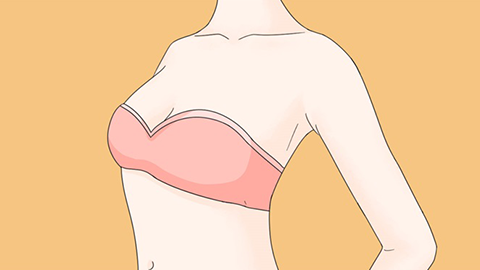What should I do if one breast is larger than the other?
In general, the phenomenon of one breast being larger than the other could be caused by differences in hormone levels, improper sleeping posture, mastitis, mammary duct ectasia, or breast cysts. It is recommended to seek timely medical advice and undergo treatments such as general therapy or medication under a doctor's guidance. Detailed explanations are as follows:

1. Hormonal Differences
During puberty, when the breasts are developing, subtle changes in hormone levels, such as estrogen and progesterone, may cause differences in the development rate of both breasts, resulting in one breast developing faster than the other. Usually, this difference may gradually decrease with age and physical maturation. It is important to maintain a balanced diet and adequate sleep, avoiding unhealthy lifestyle habits that could lead to endocrine disorders and worsen hormonal imbalances.
2. Improper Sleeping Posture
Maintaining a long-term unilateral sleeping posture can compress the breast on the lower side for extended periods, affecting blood circulation and lymphatic drainage, thereby influencing normal breast development and causing asymmetry. It is recommended to maintain good sleeping habits, avoid long-term fixed unilateral lying, and alternate between supine or changing sides frequently to ensure smooth blood circulation and lymphatic drainage in the breasts.
3. Mastitis
Mastitis is usually caused by bacterial infection and commonly occurs in lactating women. Inflammation may cause localized breast tissue congestion and edema, leading to increased breast volume and one breast appearing larger than the other. Symptoms such as redness, swelling, and fever in the breast may also occur. Treatment may include medications like amoxicillin capsules, cephalexin capsules, and metronidazole tablets, as directed by a physician.
4. Mammary Duct Ectasia
Mammary duct ectasia may be caused by impaired ductal drainage or bacterial infection. When mammary ducts dilate, they can cause inflammatory reactions in the surrounding breast tissue, affecting the breast's normal shape and potentially causing enlargement or swelling on the affected side, making it appear larger than the other side. Symptoms such as nipple discharge and breast pain may also be present. Medications like aspirin tablets, ibuprofen tablets, and dexamethasone tablets may be used under medical guidance for treatment.
5. Breast Cysts
Breast cysts are mainly caused by milk stasis or endocrine disorders leading to ductal dilation and cystic changes within the mammary lobules. Cysts may cause localized breast enlargement; if located unilaterally, they can result in breast asymmetry. Symptoms such as breast lumps and swollen axillary lymph nodes may also appear. Treatment options may include medications like Guizhi Fuling capsules, Runei Xiaoyin liquid, and Ru'an capsules, as advised by a physician.
In daily life, regular breast self-examinations should be performed to detect abnormalities early. Additionally, maintaining a pleasant mood is important to avoid emotional factors that may affect the endocrine system and, consequently, breast health.






